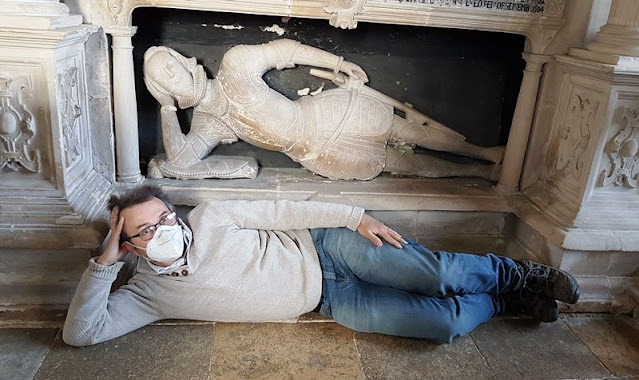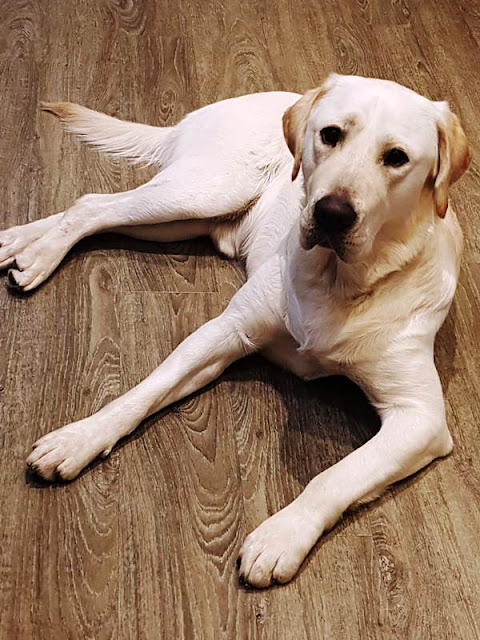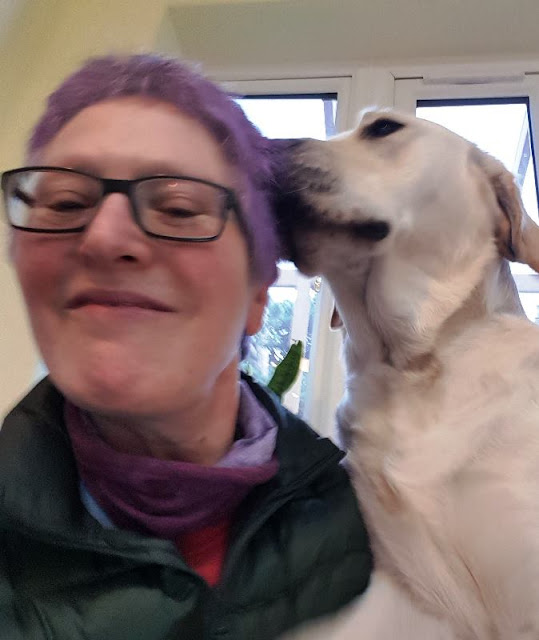 |
| Mr M in St Mary's Church, Swinbrook |
I'm not usually all that interested in churches, but having read 'Pillars of the Earth' recently, which has the building of a cathedral running through it, St John the Baptist Church was built around the same time in the 12th century. There was a leaflet describing some interesting features - the Harman memorial for example, in which are carved the images of the sixteen Harman children as well as the first known depiction in England of Amazon Indians. Henry Harman was one of King Henry VIII's barbers, a gentleman of his Privy Chamber, and also one of the witnesses to his will. The leaflet also mentioned the incident in 1649 when 340 of the rebel Levellers were imprisoned in the church. One of them carved his name into the lead within the font, and three ringleaders were shot in the churchyard. (Mr M also reminded me: the church also had a 14th century clock and an interesting tomb with a stone skeleton that has a human femur).
The weather was not great, and although it didn't rain and was even sunny for a time, the wind was cold and bitey. We set off across country and reached the village of Swinbrook, which has another really interesting 12th century church which not only contains the strangest monuments that I've ever seen, but also the graves of four of the Mitford sisters and their parents as well as a memorial inside to their brother Thomas who was killed in World War 2.
The strange monuments in St Mary's Church are two sets of three reclining figures set one above the other as if on shelves. The first set was created in 1613 and the second in 1686, and each represents a member of the Fettiplace family, who held the manor of Swinbrook during the 17th century. When I did some online research to get these facts right, it seems that we missed some of the other features of this church, including the 'big nose misericord' carved in wood.
The third church on the walk was St Oswald's Church, which was originally a Saxon or Norman structure but most of the current building dates from the 11th century. The surrounding village of Widford has now disappeared, perhaps from plague or economic failure, and the church was closed in 1859 and used as a farm building. When it was restored in 1904 they not only found a Roman mosaic beneath the floor (which has had to be covered up again due to pilfering), but they also uncovered several 14th century wall paintings.
The walk took a bit longer than anticipated, but thankfully cake shops were still open in Burford. It was a lovely day and Lola II and I celebrated Mr M's advancing years with tea, coffee, chips, a sandwich, and a scone with jam and cream. Interestingly, Mr M was the only one who actually ordered cake.
 |
| Can you tell which one is Mr M? |











